People
‘We’re Drawn to a Certain Rawness’: Designer-Turned-Artist Helmut Lang and Anthony Vaccarello on Their New Collaboration
For his latest work, Lang turned to Vaccarello's designs as inspiration—and as raw material.
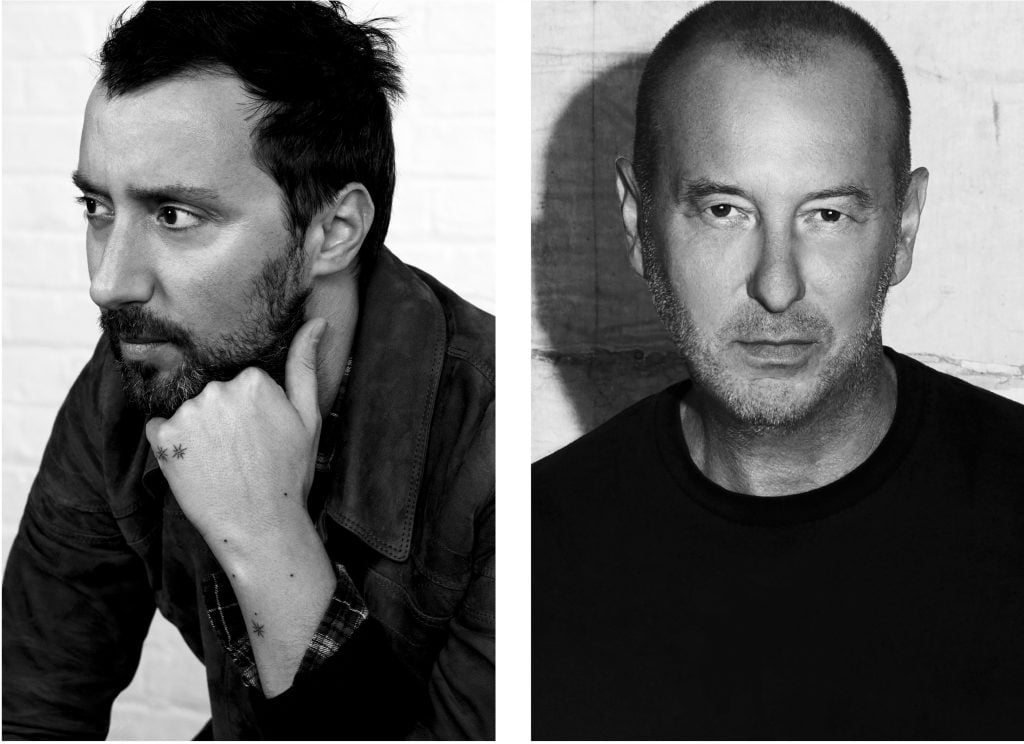
For his latest work, Lang turned to Vaccarello's designs as inspiration—and as raw material.

Noor Brara

Talk to anyone with the vaguest understanding of fashion history and they’ll tell you that Helmut Lang all but singlehandedly invented ’90s minimalism. His cool designs, crafted from utilitarian materials like denim, cotton, metal, and rubber, were revolutionary in their simple, no-frills construction, and prioritized fit and ease over embellishment and decoration. For many, Lang was a fashion kingpin. And then, in 2005, he left it all behind to become a full-time artist.
This fall marks his return to the fashion fold, in a different way. Anthony Vaccarello, the creative director of Saint Laurent, recently invited Lang, a major inspiration for him, to partake in a new exhibition at the Saint Laurent Rive Droite shop in Paris.
The twist? Lang was given Vaccarello’s creations to use as raw materials, which he transformed into pitch-black, floor-to-ceiling sculptures forged from fabric, hardware, resin, and aluminum.
The show, “Helmut Lang x Anthony Vaccarello for Saint Laurent Rive Droite,” will be on view through the end of October, when the sculptures will move to Saint Laurent’s Los Angeles shop, where they will be for sale.
Lang and Vaccarello spoke to Artnet News about the collaboration, the link between art and fashion, and what the future looks like for artists and designers alike.
Rarely do two powerhouse creative directors like yourselves come together to collaborate. How did this project come to be?
Helmut Lang: I’m not a powerhouse creative director… just an artist here. Two years ago, we started playing around with the idea of working together without any pressure of timing. It developed organically into the final outcome. I am aware of time and equally ignorant of it, and we took advantage of that.
Anthony Vaccarello: I went to visit [Lang] in Long Island, and he showed me his artworks, which featured the transformation of different materials into sculptures, and the collaboration took shape instinctively.
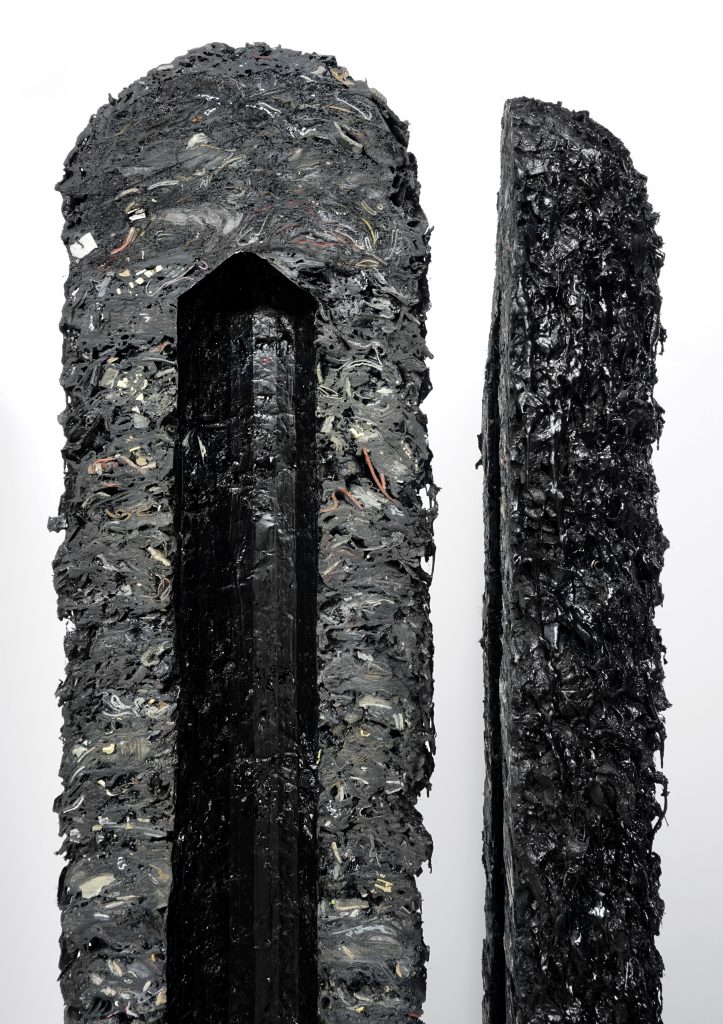
Photo courtesy Saint Laurent.
The exhibition presents sculptural objects made by you, Helmut, using Anthony’s creations as raw materials. Did you discuss with each other what you would do to them?
HL: We discussed different options while we were circling around our different artistic practices. Somehow in that process, Anthony proposed to create sculptures for [Saint Laurent] that have a reference to earlier sculptures I’ve produced over the past 10 years, but using Anthony’s discarded materials from his past Saint Laurent collections as raw materials. While I was working on the sculptures, we did not communicate about them, as we had trust in each other.
AV: I gave Helmut access to all the leftover pieces, unused items from virtually all my previous collections for Saint Laurent. Then he selected what he felt was needed and he started his process to make the sculptures. I felt it was going to be absolutely on point.
What was it like knowing that your pieces would be manipulated by another designer—especially one from whom you’ve gleaned inspiration and whose work has had a hand in shaping your eye?
AV: Honestly, clothes are not sacred to me. I am not materialistic. I may be nostalgic in some ways, but it’s more an emotional thing than an attachment to possessions. I have actually enjoyed the transformation of all the pieces that once had potential to be something else, and to have a kind of second life as a powerful and meaningful piece of art realized through the eyes and hands of someone I admire since I can remember.
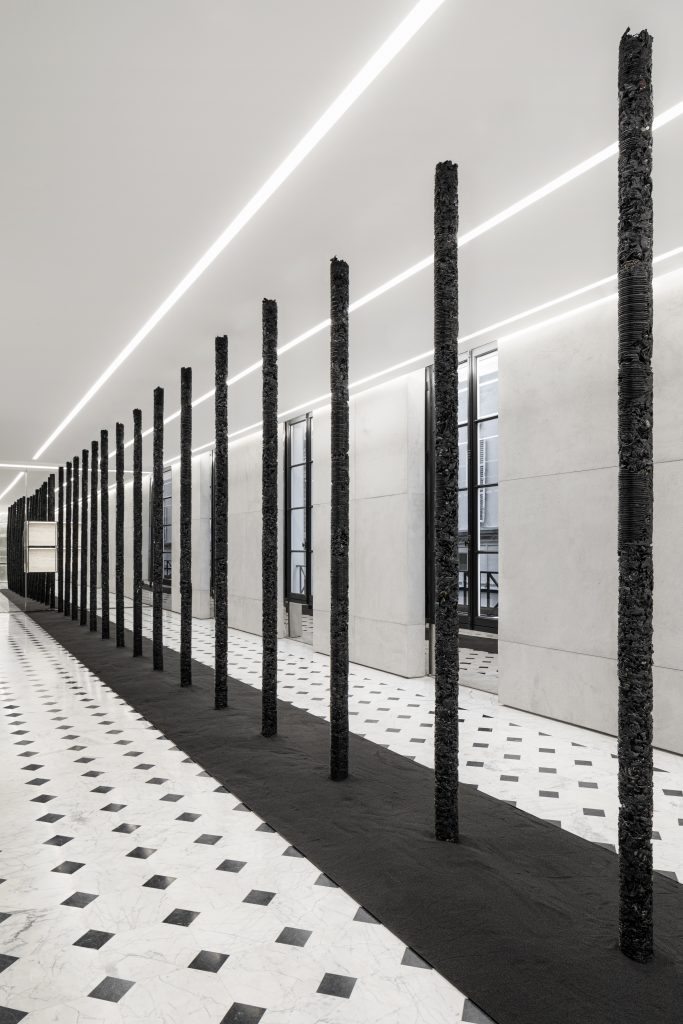
Photo courtesy Saint Laurent.
What were the unique challenges of working on this project given coronavirus restrictions?
HL: The presentation was delayed. It did not influence the work in my studio, which I was able to use, as it is on the same property as my house. I am used to working in isolation.
How would you each describe the synergy between your work?
AV: I think that we are interested in the same kind of beauty: not too polished or soft. We’re drawn to a certain rawness, a twisted side, a disturbing appeal.
HL: We have a mutual respect for each other’s work. That’s enough to make progress. We did not consciously explore what we have in common or not in common. I think we have a feeling for each other’s approach, as we both have an interest in the dark side and bright side. We are familiar with a range of emotions, just expressed through different media. Our work does not wear off easily—it stays with you like an infectious disease, but one you actually want.
Purists have long railed against the idea that fashion can be art. Talk to me about the exhibition in this context. Helmut, do you see this work as art or fashion?
HL: I would say fashion is an art in itself, but it is still an applied art. To quote Yves [Saint Laurent]: “Fashion is not quite an art, but it requires an artist in order to exist.” My artwork is exactly what it is—artwork. Period. The use of clothing and accessories is simply as raw material.
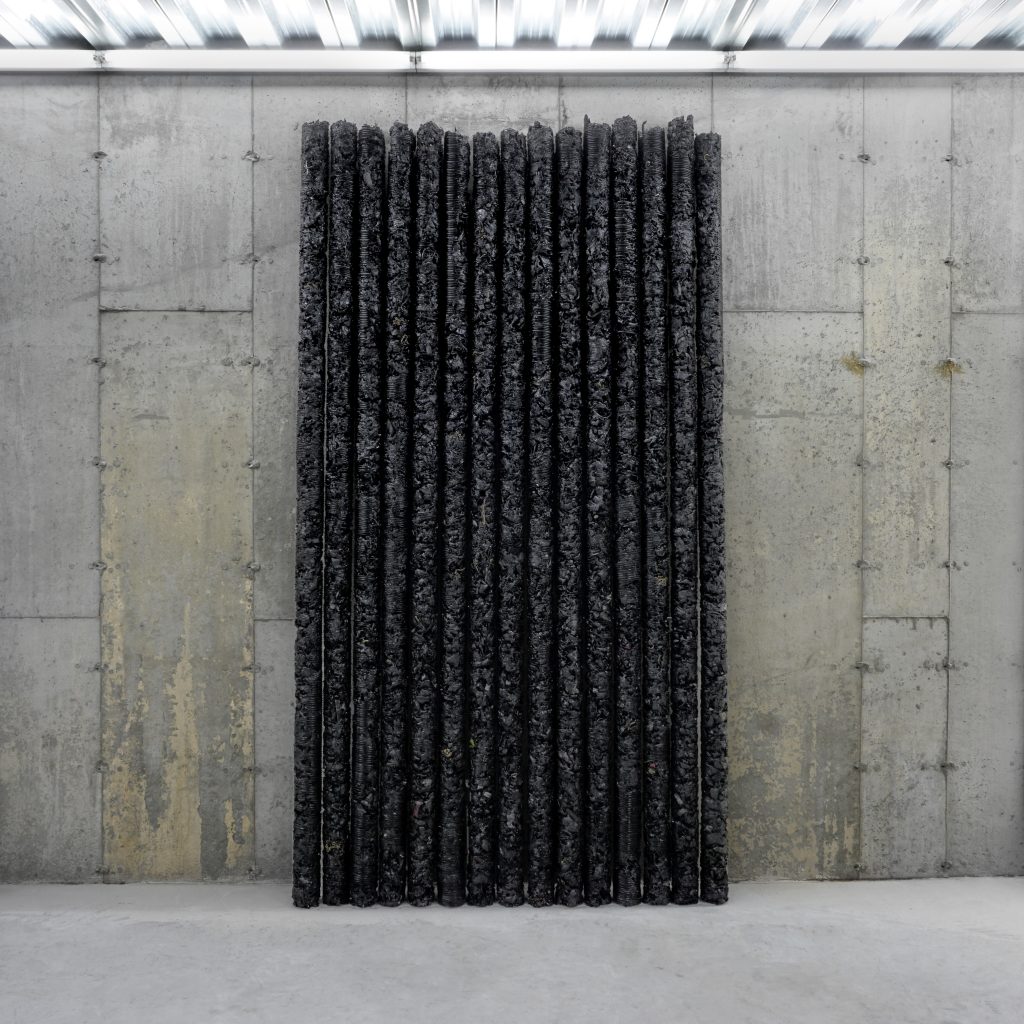
Photo courtesy Saint Laurent.
You became a full-time visual artist in 2005. What led you to make the switch?
HL: I felt at the time—a premonition, if you will—that the world would be changing soon, in a massive way, and not in a direction I was comfortable with. I worked before with and around the human body. With art, there are not many boundaries. I build up sculptures—bodies of a different kind—armed with my own vision and prompted by the desire to find the best outcome and form. I choose my own pace. The making of art is a flow of procedures, successes, and failures. If the sculpture is strong enough and able to fight back, that is often a good moment to stop.
Anthony, you’ve collaborated with artists over the course of your career. What do you enjoy most about that process?
AV: The idea started from my wish to combine creative disciplines across art and fashion to reinforce and fuel the Saint Laurent spirit through an artistic lens. The selection of the artists is a very instinctive process based on the admiration and the respect I nurture for each of them, and it’s incredible how, in the results of their artworks, you can find and feel the Saint Laurent fantasy taking shape because we share the same vision.
I think, in general, a collaboration across different creative fields is good when there’s a conceptual match. When your vision is in line with the one you are collaborating with, the result is a natural and consistent consequence.
HL: I collaborated with Jenny Holzer and Louise Bourgeois from the mid-1990s for about 10 years, mostly when I was still in fashion. Those collaborations were founded on personal friendships and admiration, the desire to spend time together, and to create something and to extend our possibilities in doing so. Now, as I am in the reverse position, I find myself in a similar relationship, but at the other end of it. I cannot really comment on what the nature of other collaborations are, as I haven’t really been involved with the fashion business for 15 years.
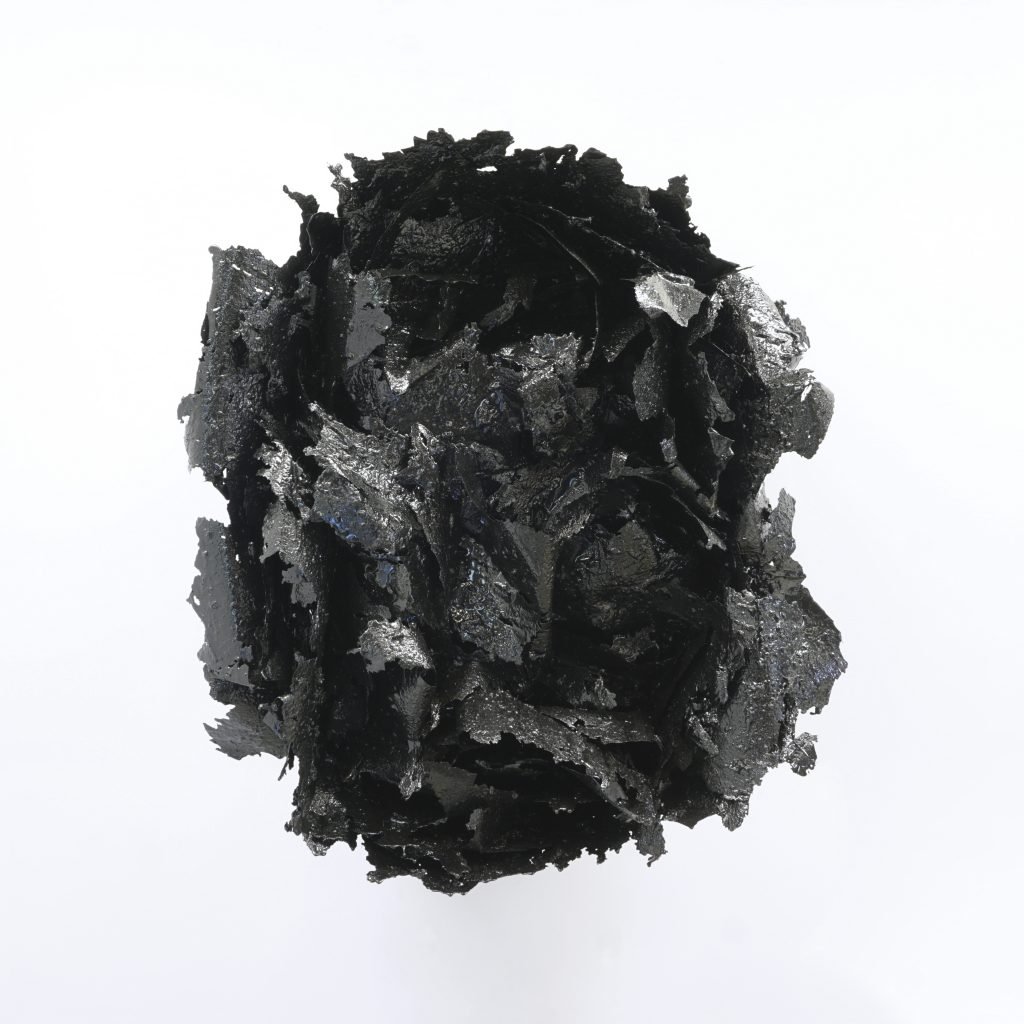
Photo courtesy Saint Laurent.
In what ways do you feel the art and fashion worlds will be changed by 2020?
AV: I really think that the industry should stop rushing ahead, and being too fast and repetitive. It’s time to pause and truly think about meaningful next moves. Make the change more than talking about it.
HL: The art world needs change—it is time to break the generic rules, bourgeois disapprovals of the new, and perceptions which are widely in place. We need to stop keeping a pace that’s unnatural for artists. This might be possible now because everything is interrupted beyond the art world, as we need change on so many levels. Bad times often create new beginnings. I hope for a reaction against the overtly grand and superficial.
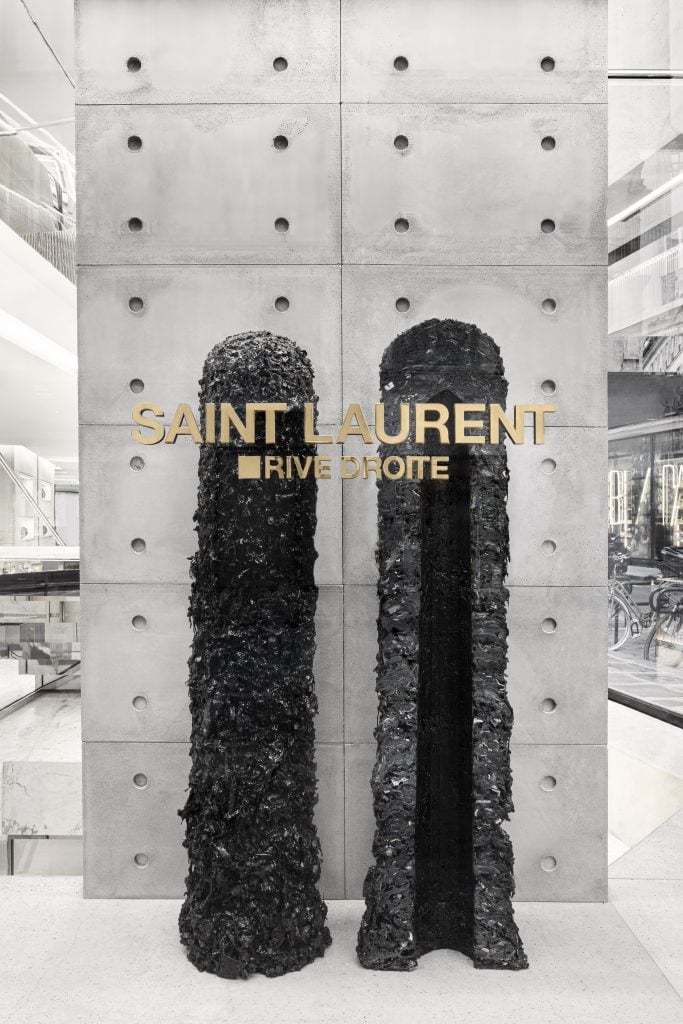
Photo courtesy Saint Laurent.
Helmut, what is the role of the artist today? Anthony, what is the role of the designer today?
HL: The same as always—to express what is unconsciously or consciously inside oneself. The sum of one’s life leads to the artwork one creates. I don’t think I have a role to play, and I never did. It is more that I have no other choice than to be true to myself, for better or worse.
AV: I think designers should focus on doing great clothes for our times. Of course fashion needs to be connected to what is happening around it. But I really think political or social messages should never overtake the true purpose of fashion.